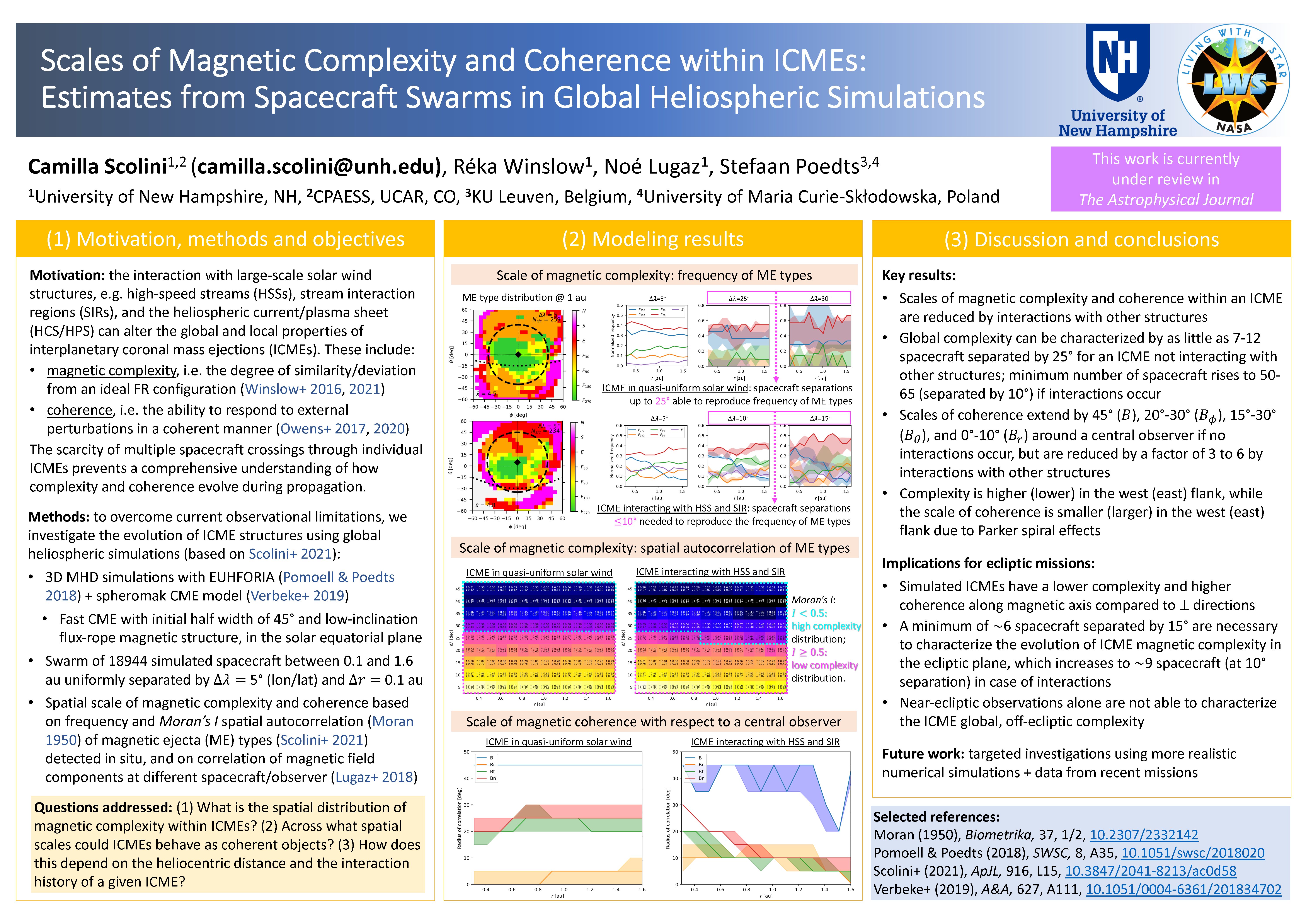Authors: Camilla Scolini (UNH), Réka M. Winslow (UNH), Noé Lugaz (UNH), Stefaan Poedts (KU Leuven)
Many aspects of the three-dimensional (3-D) structure and evolution of Interplanetary Coronal Mass Ejections (ICMEs) remain unexplained. A prominent open question is whether they are magnetically-coherent objects, and at which scales such coherence exists. Recent studies also highlighted the ever-changing nature of their magnetic complexity during propagation, primarily as a consequence of interactions with other large-scale solar wind structures. Yet, no comprehensive investigation on the spatial distribution of magnetic complexity and its evolution with heliocentric distance has been attempted. Pursuing a novel approach, in this work we perform numerical simulations using the EUHFORIA heliospheric model, and exploit its 3-D capabilities to address the following questions: (1) What is the spatial distribution of magnetic complexity within ICME flux ropes? (2) Across what spatial scales might ICME flux ropes behave as magnetically coherent objects? (3) How do complexity and coherence depend on the heliocentric distance and the specific evolution history of an ICME flux rope? We simulate ICMEs interacting with different solar winds using the linear force-free spheromak model incorporated into the EUHFORIA model. We place a swarm of ~20000 spacecraft in the 3-D simulation domain, and characterize ICME magnetic complexity and coherence at each spacecraft based on simulated time series.
Our simulations suggest that ICMEs retain a lower complexity and higher coherence along their magnetic axis, but that a characterization of their global complexity requires crossings along both the axial and perpendicular directions. For an ICME of initial half width of 45 degrees that does not interact with other large-scale solar wind structures, global complexity can be characterized by as little as ~7 spacecraft separated by ~25 degrees, but the minimum number of spacecraft rises to ~50-65 (separated by ~10 degrees) if interactions occur. Without interactions, the coherence scale of the magnetic field strength around a reference observer extends through the whole structure, while it may be significantly smaller for the magnetic field components. The coherence scale is lower in the ICME west flank compared to the east flank due to Parker spiral effects, and is reduced by up to a factor of 6 due to interactions with solar wind structures. Our findings help constrain some of the critical scales controlling the evolution of ICME magnetic structures, and provide indications on the appropriate spatial configuration for future dedicated multi-spacecraft missions.


